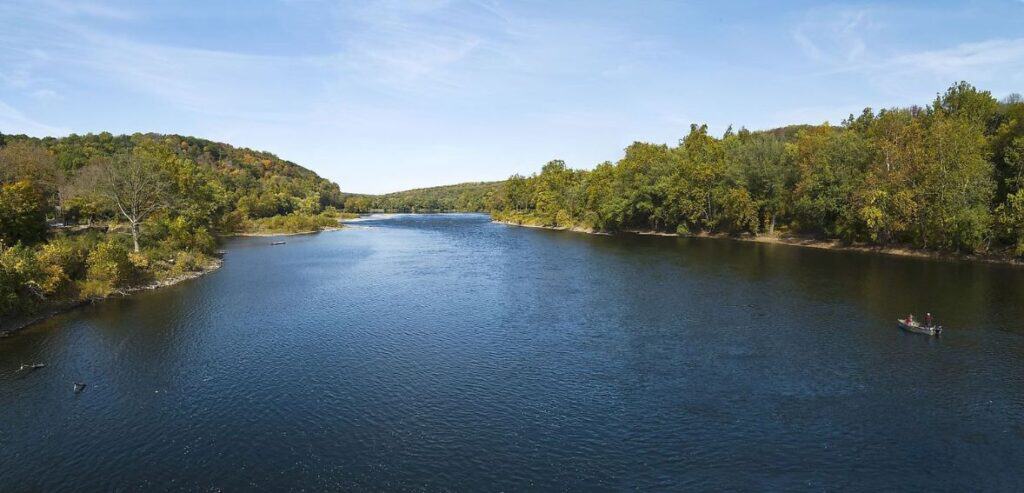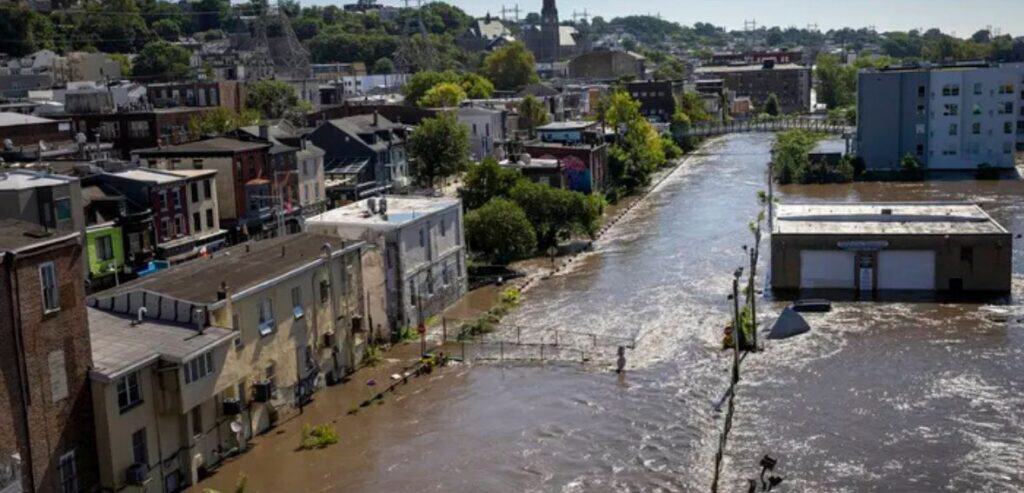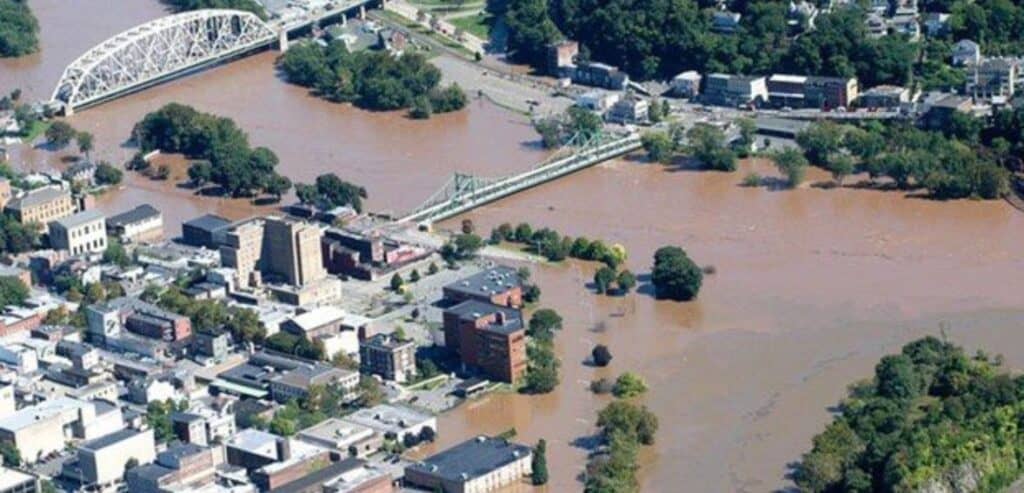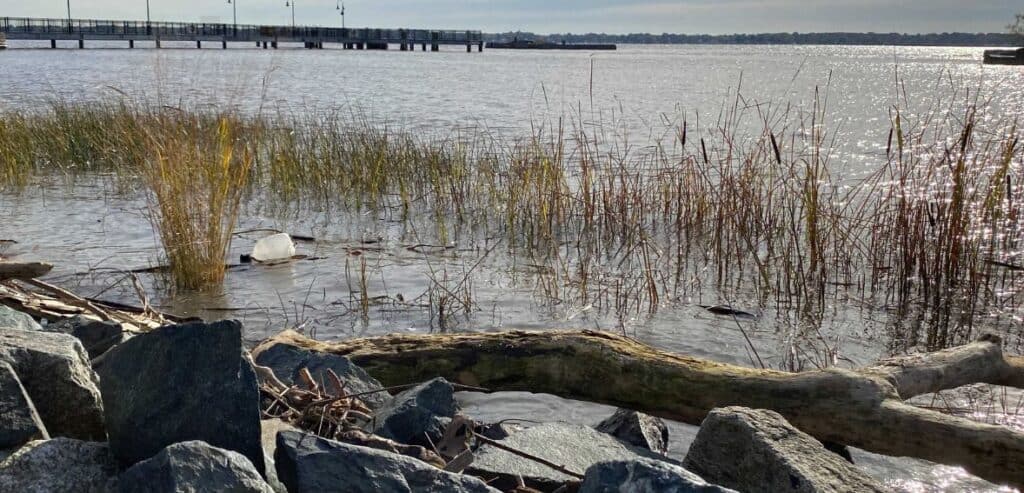The Delaware River has long been a vital resource for millions of people, supplying drinking water, supporting industries, and shaping the urban landscapes of cities like Philadelphia, Camden, and Wilmington. But as climate change intensifies, this critical waterway faces growing threats—rising sea levels, increased flooding, saltwater intrusion, and more unpredictable weather patterns. These changes are not just environmental concerns; they pose real challenges for urban planners, policymakers, and local communities striving to adapt.
With the river’s health directly tied to drinking water security, infrastructure stability, and economic growth, planning for the future has never been more urgent. How can cities along the Delaware River protect against worsening floods? What strategies can they implement to safeguard water supplies? And how should urban spaces be designed to withstand the increasing impacts of climate change? This article explores the intersection of climate change and urban planning along the Delaware River, examining the risks, responses, and innovative solutions shaping the region’s future.
How Climate Change is Reshaping the Delaware River Basin

The Delaware River Basin is facing profound changes due to climate change, and the impacts are becoming more evident with each passing year. From stronger storms and rising temperatures to saltwater intrusion, the challenges ahead demand urgent attention from urban planners, policymakers, and local communities.
Heavier Rainfall and More Flooding
Rainfall patterns in the Delaware River Basin have become more unpredictable, with heavier downpours and more frequent storms. The U.S. has been seeing an overall increase in precipitation since the 1990s, and the Northeast is no exception. With this increase comes a growing risk of chronic flooding. Within the next two decades, nearly 170 U.S. communities could face regular, disruptive flooding.
Pennsylvania has already identified flooding as the most significant climate-related hazard the state will face, and for good reason. Many cities in the Basin—Philadelphia, Camden, and Trenton—have aging stormwater and wastewater systems that were never designed to handle today’s rainfall extremes. When storms hit, these outdated systems are overwhelmed, leading to street flooding, sewer overflows, and even raw sewage backing up into homes.
Low-income and marginalized communities often bear the brunt of these failures, as they are more likely to live in flood-prone areas with inadequate infrastructure.Beyond water management issues, heavy storms also threaten the region’s transportation network. Many of Delaware’s regulated dams are located near roads and bridges, making them vulnerable to washouts. As storm intensity increases, infrastructure failures could become more common, disrupting daily life and increasing repair costs.To make matters worse, while the intensity of storms is increasing, their frequency is shifting as well.
Fewer but more powerful winter storms could mean a mix of severe flooding and prolonged droughts. Reduced snowfall in winter may lead to lower river flows in the spring, further complicating water management and increasing competition for water resources.
Rising Temperatures and Wildlife Disruptions
Climate change isn’t just about storms—it’s also about heat. Rising temperatures are crearising temperaturesting more frequent and intense heat waves, affecting both people and ecosystems. Vulnerable communities, including the elderly and those without access to air conditioning, face serious health risks as extreme heat becomes more common.
Wildlife is also feeling the effects. Migratory birds like the Red Knot, which rely on precise seasonal food availability, are struggling to adapt as warming temperatures throw off their migration patterns. Meanwhile, fish populations in the Basin are also under pressure.
Warmer water evaporates faster, reducing stream flows and making habitats more difficult to survive in. Lower water levels combined with rising temperatures mean less dissolved oxygen, harming aquatic species and disrupting local fisheries that depend on a stable ecosystem.
Sea Level Rise and Saltwater Intrusion
For communities closer to the coast, rising sea levels present yet another threat. As sea levels rise, saltwater from the Atlantic is creeping further up the Delaware River, threatening drinking water supplies. Coastal aquifers—critical sources of fresh water for many New Jersey communities—are at risk of contamination as the groundwater table drops below sea level.
New Jersey is particularly vulnerable because much of its drinking water comes from “sole source aquifers,” meaning there are few, if any, alternative water sources. If saltwater moves too far upstream, water treatment plants and drinking water intakes along the Delaware River could face serious challenges in providing clean water.
How Climate Change is Reshaping Urban Planning in Delaware
Delaware is on the front lines of climate change. As a low-lying coastal state, it faces rising sea levels, stronger storms, and extreme weather that are already disrupting daily life. These challenges aren’t just environmental—they’re reshaping how cities and towns plan for the future. From rethinking infrastructure to protecting vulnerable communities, urban planners in Delaware are being forced to adapt quickly.
Coastal Storms and Flooding: A Growing Threat

Hurricanes and nor’easters are getting stronger, dumping more rain and causing greater storm surges. Delaware’s beaches, which serve as natural barriers against these storms, are eroding faster than before. With more intense storms, flooding is becoming a regular issue, damaging roads, homes, and businesses in coastal towns like Lewes and Rehoboth Beach.
Urban planners are now incorporating flood-resistant designs into new developments. Cities are investing in better stormwater management, elevating roads and bridges, and updating building codes to withstand strong winds and rising waters.
Rising Temperatures and Extreme Heat

Heatwaves are becoming longer and more frequent, pushing summer temperatures to dangerous levels. Delaware currently experiences only a couple of days over 100°F each year, but by 2100, that number could skyrocket to nearly a month of extreme heat.
For urban areas like Wilmington, this is a major concern. The city’s dense infrastructure traps heat, creating “urban heat islands” where temperatures are even higher than surrounding areas. To counter this, planners are focusing on expanding green spaces, increasing tree cover, and using reflective materials on roads and buildings to help keep cities cooler.
Winter Storms and Changing Precipitation Patterns

Winters in Delaware are shifting. Instead of steady snowfall, the state is seeing more sporadic but extreme storms, often bringing heavy rain instead of snow. This change increases the risk of inland flooding, as frozen ground can’t absorb sudden downpours.
Local governments are working to improve drainage systems and reinforce dams and levees that could be overwhelmed by these more intense storms. Additionally, transportation planners are considering how to make roadways more resilient to frequent freeze-thaw cycles that cause potholes and structural damage.
Drought and Water Supply Challenges
Delaware’s agriculture sector, a crucial part of the state’s economy, is feeling the effects of hotter, drier summers. More frequent droughts are making irrigation more difficult and costly. Urban areas also rely on consistent water supplies, and prolonged dry spells could strain reservoirs and groundwater sources.
Water conservation measures are becoming a bigger focus in urban planning. New building projects are being designed with efficient water use in mind, and there’s a push for smarter irrigation systems that help both farmers and city residents use water more effectively.
Protecting Natural Barriers and Ecosystems

Climate change isn’t just altering city landscapes—it’s reshaping Delaware’s ecosystems. Marshlands, which have long acted as buffers against storm surges, are at risk of drowning under rising sea levels. Forests that help absorb rainwater and prevent flooding may struggle to survive hotter, drier conditions.
To combat these losses, Delaware is investing in nature-based solutions. This includes restoring wetlands, planting more trees, and designing parks that double as stormwater catchment areas. These efforts help both urban and rural areas by providing flood protection and cooling effects.
Steps Taken by Delaware to Address Climate Change Challenge
The challenges of climate change can feel overwhelming, but there are real solutions already in motion. While no single fix can undo the damage, a combination of policies, programs, and local action is helping the Delaware River Basin adapt and build resilience. Addressing climate change requires collaboration across all levels of government, investment in smart infrastructure, and a commitment to protecting both people and ecosystems.Here are some key initiatives making a difference:
Investing in Clean Water and Habitat Restoration
Protecting and restoring natural ecosystems is one of the most effective ways to build climate resilience. The U.S. Fish and Wildlife Service’s Delaware River Restoration Program has already provided over $26 million in funding for projects that improve water quality, restore habitats, and enhance recreational areas. These efforts help maintain the health of the river while also providing economic benefits to local communities that depend on fishing, tourism, and outdoor recreation.
Upgrading Infrastructure for a Changing Climate
Aging stormwater, wastewater, and drinking water systems are struggling to keep up with the increasing frequency of extreme weather. The Bipartisan Infrastructure Law provides crucial funding to upgrade these systems, ensuring communities have clean drinking water and improved flood control measures. Additionally, the law allocates money for nature-based solutions, such as wetlands restoration and green infrastructure, to help manage stormwater more effectively.
Advancing Clean Energy and Sustainability
The Build Back Better initiative represents the largest investment in climate action in U.S. history. By focusing on clean energy technology, environmental justice, and climate resilience, this effort supports the transition to renewable energy while ensuring that historically marginalized communities are not left behind. The program also promotes energy efficiency in homes and businesses, reducing emissions while lowering utility costs.
Supporting Public Transit and Sustainable Development
Reducing greenhouse gas emissions isn’t just about transitioning to clean energy—it’s also about rethinking how people move. The American Rescue Plan directs funding to improve public transit systems, helping to reduce reliance on fossil fuel-powered vehicles. Additionally, the plan provides resources to upgrade water and sewage infrastructure, with a focus on supporting Indigenous and frontline communities that have been disproportionately affected by pollution and climate change.
Community Engagement and Environmental Justice
Climate change impacts everyone, but it doesn’t affect all communities equally. Low-income neighborhoods and communities of color are often hit the hardest by pollution, extreme weather, and environmental degradation. Federal funding from the Environmental Protection Agency (EPA) is being used to address these disparities, ensuring that vulnerable communities have access to clean air, safe water, and resilient infrastructure.
Conclusion
Climate change is reshaping the Delaware River Basin, but proactive solutions—like resilient infrastructure, clean energy investments, and ecosystem restoration—are helping communities adapt. By prioritizing sustainability and protecting vulnerable areas, we can ensure a stronger, healthier future for the region. With continued action and collaboration, the Basin will remain a vital resource for generations to come.

Leave a Reply